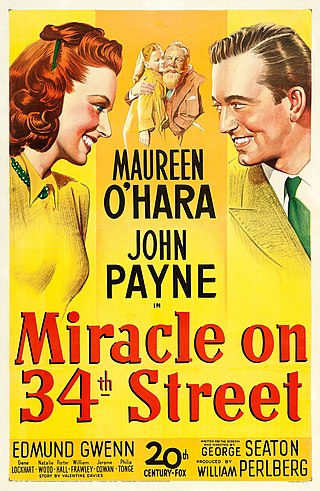
Miracle on 34th Street is a 1947 American Christmas comedy-drama film released by 20th Century-Fox, written and directed by George Seaton and based on a story by Valentine Davies. It stars Maureen O'Hara, John Payne, Natalie Wood, and Edmund Gwenn. The story takes place between Thanksgiving and Christmas in New York City, and focuses on the effect of a department store Santa Claus who claims to be the real Santa. The film has become a perennial Christmas favorite.
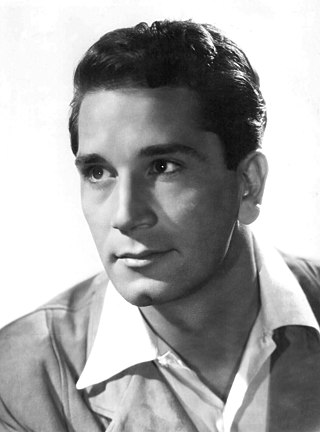
Nicholas Peter Conte, known professionally as Richard Conte, was an American actor. He appeared in more than 100 films from 1939 through the 1970s, including I'll Cry Tomorrow, Ocean's 11, and The Godfather.
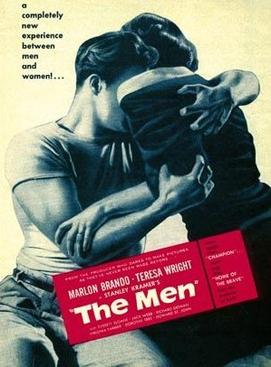
The Men is a 1950 American drama film. Set mostly in a paraplegic ward of a VA hospital, the film stars Marlon Brando as an ex-GI named Ken who as a result of a war wound is paralyzed and uses a wheelchair. Suffering depression and impaired self-concept, Ken struggles to accept his disability and his need to accept care from others, including from his fiancée/wife.
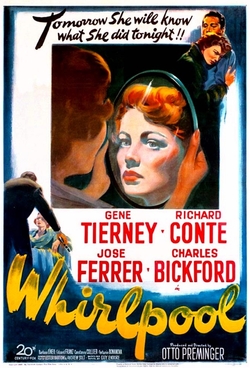
Whirlpool is a 1950 American film noir thriller directed by Otto Preminger and written by Ben Hecht and Andrew Solt, adapted from the 1946 novel Methinks the Lady... by Guy Endore. The film stars Gene Tierney, Richard Conte, José Ferrer and Charles Bickford, and features Constance Collier in her final film role. Its plot follows the kleptomaniac wife of a wealthy Los Angeles psychoanalyst who, after a chance meeting with a hypnotist, is charged with a violent murder.
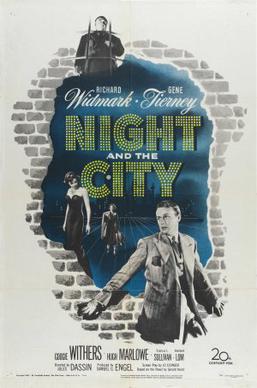
Night and the City is a 1950 British film noir directed by Jules Dassin and starring Richard Widmark, Gene Tierney and Googie Withers. It is based on the novel of the same name by Gerald Kersh. Shot on location in London and at Shepperton Studios, the plot revolves around an ambitious hustler who meets continual failures.

Francis Bosley Crowther Jr. was an American journalist, writer, and film critic for The New York Times for 27 years. His work helped shape the careers of many actors, directors and screenwriters, though his reviews were criticized as unnecessarily harsh. Crowther was an advocate of foreign-language films in the 1950s and 1960s, particularly those of Roberto Rossellini, Vittorio De Sica, Ingmar Bergman, and Federico Fellini.
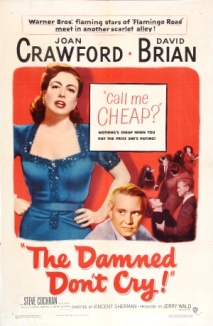
The Damned Don't Cry is a 1950 American film noir crime-drama directed by Vincent Sherman and featuring Joan Crawford, David Brian, and Steve Cochran. It tells of a woman's involvement with an organized crime boss and his subordinates. The screenplay by Harold Medford and Jerome Weidman was based on the story "Case History" by Gertrude Walker. The plot is loosely based on the relationship of Bugsy Siegel and Virginia Hill. The film was directed by Vincent Sherman and produced by Jerry Wald. The Damned Don't Cry is the first of three cinematic collaborations between Sherman and Crawford, the others being Harriet Craig (1950) and Goodbye, My Fancy (1951).

Thieves' Highway is a 1949 American film noir directed by Jules Dassin and starring Richard Conte, Valentina Cortese and Lee J. Cobb. The screenplay was written by A. I. Bezzerides, based on his novel Thieves' Market. The film was released on DVD as part of the Criterion Collection in 2005.

The Sniper is a 1952 American film noir, directed by Edward Dmytryk, written by Harry Brown and based on a story by Edna and Edward Anhalt. The film features Adolphe Menjou, Arthur Franz, Gerald Mohr and Marie Windsor.
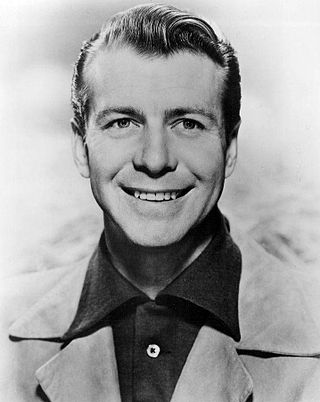
Gene Nelson was an American actor, dancer, screenwriter, and director.

Guilty Bystander is a 1950 American crime drama film noir directed by Joseph Lerner, and starring Zachary Scott and Faye Emerson. The film was shot on location entirely in New York City. It also marked the last motion picture screen appearances for character actors Mary Boland and J. Edward Bromberg.
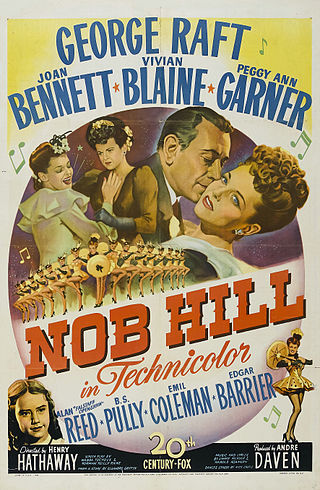
Nob Hill is a 1945 Technicolor film about a Barbary Coast, San Francisco, United States saloon keeper, starring George Raft and Joan Bennett. Part musical and part drama, the movie was directed by Henry Hathaway. It remains one of Raft's lesser known movies even though it was a big success, in part because it was a musical.
Riding High is a 1950 black-and-white musical racetrack film featuring Bing Crosby and directed by Frank Capra. The songs were performed live during filming instead of the customary lip-synching to studio recordings. The film is a remake of an earlier Capra film with screenwriter Robert Riskin titled Broadway Bill (1934). While the film is generally a light musical comedy, its plot contains an unexpected tragic turn.

Never a Dull Moment is a 1950 American comedy western film from RKO Pictures, starring Irene Dunne and Fred MacMurray. The film is based on the 1943 book Who Could Ask For Anything More? by Kay Swift. The filming took place between December 5, 1949, and February 1, 1950, in Thousand Oaks, California. It has no relation to the 1968 Disney film of the same name starring Dick Van Dyke and Edward G. Robinson.

Your Witness is a 1950 British drama film directed by and starring Robert Montgomery, Leslie Banks, Felix Aylmer and Andrew Cruickshank. It was released in the U.S. as Eye Witness.

Singapore is a 1947 American film noir crime romance film directed by John Brahm and starring Fred MacMurray, Ava Gardner and Roland Culver. The film was remade as Istanbul (1957) with the location moved to Turkey, and Errol Flynn and Cornell Borchers in the starring roles.

Miss Susie Slagle's is a 1946 American drama film directed by John Berry. It was based on the popular novel by Augusta Tucker. The film was Berry's directorial debut and first starring role for Joan Caulfield.
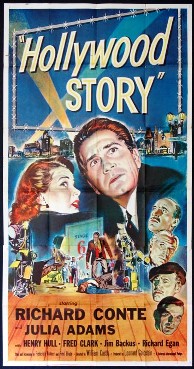
Hollywood Story is a 1951 American mystery film directed by William Castle and starring Richard Conte and Julie Adams. The supporting cast features Richard Egan, Henry Hull, Fred Clark and Jim Backus.

Under the Gun is a 1951 American crime film noir film directed by Ted Tetzlaff and starring Richard Conte, Audrey Totter and John McIntire. It was produced and released by Universal Pictures. The film's sets were designed by the art director Edward L. Ilou.
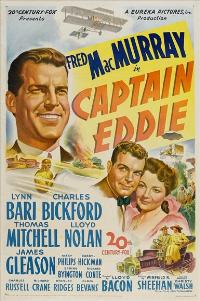
Captain Eddie is a 1945 American drama film directed by Lloyd Bacon, based on Seven Were Saved by "Eddie" Rickenbacker and Lt. James Whittaker's We Thought We Heard the Angels Sing. The film stars Fred MacMurray, Lynn Bari and Charles Bickford. Captain Eddie is a "biopic" of Rickenbacker, from his experiences as a flying ace during World War I to his later involvement as a pioneering figure in civil aviation, and his iconic status as a business leader who was often at odds with labour unions and the government.



















